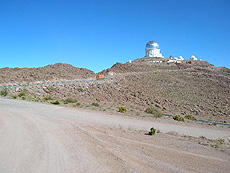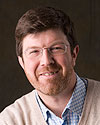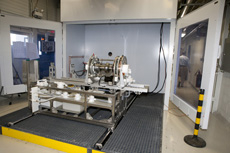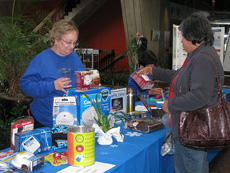|
Have a safe day!
Wednesday, Nov. 17
3:30 p.m.
DIRECTOR'S COFFEE BREAK - 2nd Flr X-Over
4 p.m.
Fermilab
Colloquium - One West
Speaker: Anders Nilsson, SLAC National Accelerator Laboratory
Title: X-Ray Shines Light on the Water Mystery
Thursday, Nov. 18
2:30 p.m.
Theoretical Physics
Seminar - Curia II
Speaker:
Surjeet Rajendran, Massachusetts Institute of Technology
Title: Luminous Dark Matter
3:30 p.m.
DIRECTOR'S COFFEE BREAK
2nd Flr X-Over
THERE WILL BE NO ACCELERATOR PHYSICS AND TECHNOLOGY SEMINAR TODAY
Click here for NALCAL,
a weekly calendar with links to additional information.
Upcoming conferences
|
|
Wednesday, Nov. 17
- Breakfast: Croissant sandwich
- *Cajun-style lentil soup
- Cajun chicken ranch
- BBQ ribs
- Chicken parmesan
- Smoked turkey panini pesto mayo
- Assorted sliced pizza
- Chicken alfredo fetuccine
Wilson Hall Cafe Menu
|
|
Wednesday, Nov. 17
Lunch
- Chicken breast stuffed w/ sundried tomatoes & goat cheese w/ shallot thyme sauce
- Orzo
- Sauteed spinach
- Italian cream cake
Thursday, Nov. 18
Dinner
- Mushroom duxelle
- Duck breast w/ blackberry sauce
- Brussels sprouts
- Panna cotta w/ cranberry wine sauce
Chez Leon Menu
Call x3524 to make your reservation.
|
|
Email, network down sitewide on Thursday morning
This Thursday morning, Nov. 18, Computing Division Facilities Management will conduct a scheduled power outage to replace a recently discovered problematic breaker and to perform preventative maintenance. This outage will cause a downtime for all systems dependent upon Feynman Computing Center facilities starting at approximately 3 a.m. The network is scheduled to be back online at around 8:30 a.m., e-mail should be restored at around 9 a.m., and other services should be back by 10 a.m.
While CD Facilities Management personnel expect this outage to last no more than 7 hours, if it extends beyond the scheduled time you can get updates by:
- following the Service Desk Twitter feed on your smart phone, @FNALServiceDesk,
- visiting the Service Desk on the ground floor of Wilson Hall,
- and calling the Service Desk at (630) 840-2345.
|
A camera's odyssey

|
| Semi trucks carrying part of the Dark Energy Camera make their way up the side of Cerro Tololo in the Chilean Andes. Photo: Gale Brehmer, CTIO. |
In comparison to scouring the universe for elusory dark energy, transporting a fragile, multi-ton, one-of-a-kind camera from the windswept Illinois prairie to the barren mountaintop of Cerro Tololo in the Chilean Andes is a simple feat. By any other comparison, though, it's a massive undertaking.
Since 2004, the Dark Energy Survey collaboration has worked at Fermilab on constructing a large 570-megapixel camera that will take snapshots of the night sky to search for dark energy. Scientists believe dark energyis causing the expansion of the universe to speed up. Parts of the Dark Energy Camera are already fully operational, and the DES collaborators are beginning to ship them one by one to Cerro Tololo Inter-American Observatory in Chile through the rest of the year. There, scientists will attach the camera to an existing telescope.
Many of the camera’s components have already traveled from far-off lands, including England, Germany, Spain and Italy to Fermilab, but they have even farther to go. The first piece of DECam recently arrived at Cerro Tololo after a long, complicated journey over land and sea.
At noon on September 16, two semi-trucks carrying empty shipping containers arrived at Fermilab to pick up the disassembled F/8 handler, the heavy apparatus that installs and removes a 1-ton mirror from the front of the camera. The F/8 mirror, already at CTIO, will allow researchers to direct celestial light into the telescope’s other experiments when not using DECam. Its handler was carefully packaged into wooden crates and then into the shipping containers for the month-long journey. After the short jaunt to Chicago aboard the semis, the two 10-ton containers were loaded onto a 50-car train bound for Elizabeth, NJ. From there, the cargo was transferred back onto semis, driven to New York Harbor, and placed in storage for the next week to await the arrival of their transport ship, Kiel Express.
“It was cool to watch the F/8 handler loaded into containers just like other stuff that’s going around the world,” said Brenna Flaugher, DECam project manager. “It reminded me of the scene at the end of ‘Raiders of the Lost Ark’ where it goes into a box that looks like all the other boxes, but somehow they managed to get the right boxes to Chile.”
Read more |
Fermilab pairs dinner hosts with guests for TurkeyDate 2010
International Services will play matchmaker again this Thanksgiving between volunteers at Fermilab who are hosting Thanksgiving dinners and anyone at Fermilab who does not have Thanksgiving plans. The goal of the program is to ensure that everyone at Fermilab has a place to go for Thanksgiving and people with whom to share this unique celebration.
The program is open to anyone at Fermilab: domestic or international, user, employee or contractor.
Hosts and guests interested in joining the program should visit turkeydate.fnal.gov for more information and complete a short questionnaire about dietary restrictions, transportation arrangements and other topics. There is one questionnaire for potential hosts and one for potential guests. International Services will announce matches as they are made.
Contact Katharine M. Johnson by e-mail (kjohnson@fnal.gov) or at x8640 with questions. |
Supercomputing center breaks the petaflops barrier
From ScienceDaily, Nov. 16, 2010
The Department of Energy's National Energy Research Scientific Computing Center (NERSC), already one of the world's leading centers for scientific productivity, is now home to the fifth most powerful supercomputer in the world and the second most powerful in the United States, according to the latest edition of the TOP500 list, the definitive ranking of the world's top computers.
NERSC's newest supercomputer, a 153,408 processor-core Cray XE6 system, posted a performance of 1.05 petaflops (quadrillions of calculations per second) running the Linpack benchmark. In keeping with NERSC's tradition of naming computers for renowned scientists, the system is named Hopper in honor of Admiral Grace Hopper, a pioneer in software development and programming languages.
Read more
|
|
Introducing the ICPA: The right tool for the right job
Giorgio Apollinari, head of the Technical Division, wrote this week’s column.
 |
| Giorgio Apollinari |
Developing and improving superconducting radio-frequency technology is an important goal for Fermilab. SRF technology allows us to conceive and plan for future accelerators, such as Project X, the ILC or the Muon Collider, or for energy production applications such as Accelerator Driven Systems. One thing that will help this goal is a new facility that we will start up next year in the Technical Division, named the Integrated Cavity Processing Apparatus.
Located in a refurbished machine shop area in Industrial Building 4, and under construction for the last couple of years, the ICPA will give us greater flexibility in processing single-cell SRF cavities. The new facility will provide infrastructure for chemical and mechanical processing as well as high-pressure rinsing of SRF cavities.
We have worked closely with FESS and ES&H to make the ICPA a safe and state-of-the-art facility. The surface treatment of SRF cavities often involves substantial quantities of concentrated acids. We designed the ICPA to ensure the safety of our facility’s operators at all times while providing flexibility for our R&D experiments.
The work at the ICPA will focus on the development of appropriate surface treatments for the interior of SRF cavities in order to achieve the highest electric fields to accelerate particles. Although the SRF community has known recipes for surface treatments based on mechanical or chemical processing for quite some time, a full and in-depth understanding of the resulting surface properties and their effects on the acceleration efficiency of a cavity is just starting to emerge.
The fuel for these advances is the collaboration between numerous laboratories and universities and a supply of single-cell cavities that have been processed according to the most stringent R&D specifications. The ICPA will improve our flexibility to meet these R&D needs, which processing facilities designed to address large-scale production issues that facilities at Argonne and JLab cannot meet. The ICPA will improve the connection between basic understanding of cavity properties and project-oriented mass production.
The startup of the ICPA will go hand-in-hand with the knowledge that this is the right tool for the right job in our laboratory’s future.
 |
Fermilab built this station for electropolishing SRF cavities. It is the fruit of an intense collaborative effort with Argonne National Laboratory, with input from Jefferson Lab, Oak Ridge National Laboratory and ABLE-EP, a local company. The station is one of several types of SRF surface treatment stations in the new Integrated Cavity Processing Apparatus. |
|
ES&H weekly report, Nov. 16
This week's safety report, compiled by the Fermilab ES&H section, includes no recordable incidents. Find the full report here.
Safety report archive
|
Raffle at the 2010 ES&H fair
 |
| Fermilab employees look through safety and health-themed raffle prizes at the ES&H fair Nov. 10. |
|
|